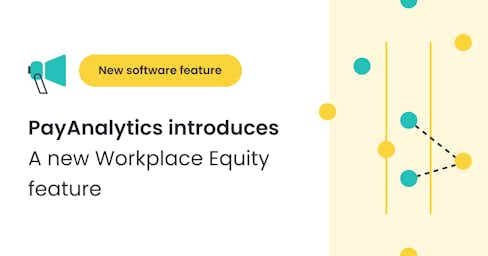Förberedelser inför EU:s direktiv om lönetransparens | Ladda ner vår e-bok gratis

PayAnalytics introduces our new Workplace Equity feature
PayAnalytics’ new Workplace Equity feature helps organizations move beyond equity in pay alone. This feature helps companies analyze diversity and representation among current employees, new hires, and employees who exit the organization, and it looks for demographic differences in who receives raises and promotions.
For any organization, working towards pay equity (often referred to as “equal pay for equal work” or “equal pay for work of equal value”) is a tremendous step towards justice and fairness.
However, pay equity is only one part of the larger landscape of workplace equity. It’s possible for an organization to offer equal pay for equal work and still have lingering inequity elsewhere. For instance, women or members of minority groups may have lower access to advancement opportunities.
To reach the full spectrum of workplace equity, organizations are increasingly undertaking diversity, equity, and inclusion (DEI) efforts. The first step in the DEI process is to get a clear understanding of where the organization currently stands and identify problem areas.
To help our customers do this, PayAnalytics now includes a Workplace Equity feature. Incorporated as part of our latest release, this feature gives organizations insight into key DEI factors.
Current workforce diversity
This includes representation within different groups and at different pay levels. This analysis helps answer some important questions. Are women and members of minority groups represented evenly throughout the organization? Or are they “ghettoized” into lower-paying roles?
Diversity in hiring and attrition
This lets users understand how the workforce is (or is not) changing. Are certain groups underrepresented or leaving the organization at disproportionate rates?
Demographic differences in raises or promotions
Management and leadership may sincerely believe that their organization provides equal advancement opportunities. Yet promotion decisions can be influenced by unconscious, implicit bias. There may also be factors making it difficult for members of certain groups to succeed and advance.
Our new Workplace Equity feature helps users see where they need to begin their DEI efforts. Armed with this information, users can plan focused efforts that will lead to a more equitable workplace where employees can truly thrive.





